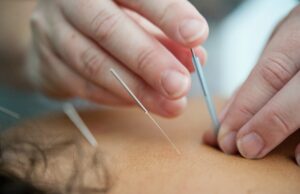Acupuncture vs Dry Needling. What is the difference?
What is the difference between acupuncture and dry needling?
Physiotherapists can offer acupuncture and/or dry needling depending on which they are trained in.
The key difference between these two methods of treatment is that Acupuncture uses Chinese medicine methods, working on improving the flow of energy within the body. Because of its aim to effect the flow of energy in the entire body, acupuncture can be used as an alternative method to help treat a variety of issues such as stomach ache, nausea, head cold, and other ailments; along with common issues like knee pain, back pain etc.
Dry needling is the western version of acupuncture and is a method of treatment where the needles are put into “trigger points” in muscles to relieve tension. Dry needling is most commonly used for treating muscle and joint pain.
(What is a “trigger point”? Simply put, a trigger point is a localised area of muscle tension that is often tender to touch)
Whilst these differences suggest the two treatments are nothing alike, there are some key similarities.
One most obvious similarity is the needles themselves; the same needles can be used for both treatments. The needles are usually very fine ranging from .18mm to .35mm in thickness, and come in a variety of lengths. Your practitioner will determine which type of needle to use depending on what are of the body being needled, its sensitivity and your past responses to treatment.
Another similarity between acupuncture and dry needling is the location on the body the needles are inserted. If you compare a map of common trigger points (used in Dry needling) on a person, alongside a map used for acupuncture points the map is very similar between the two approaches. However, needles are inserted into these points for different reasons.
For example, a Physiotherapist who was performing dry needling might put a needle into your knee to treat knee pain that you have been experiencing, whereas there are meridian points in the knee that an acupuncturist might use to help with back pain, nausea, or abdominal pain.
If you are interested to learn more about Dry needling or think it may help then please feel free to contact us through our website www.fightingfitphysio.co.nz.
At Fighting Fit Physiotherapy we perform Dry Needling, if you are interested in acupuncture we may be able to help direct you to another practitioner who is able to perform acupuncture, alternatively you can look at the Acupuncture NZ website: www.acupuncture.org.nz

